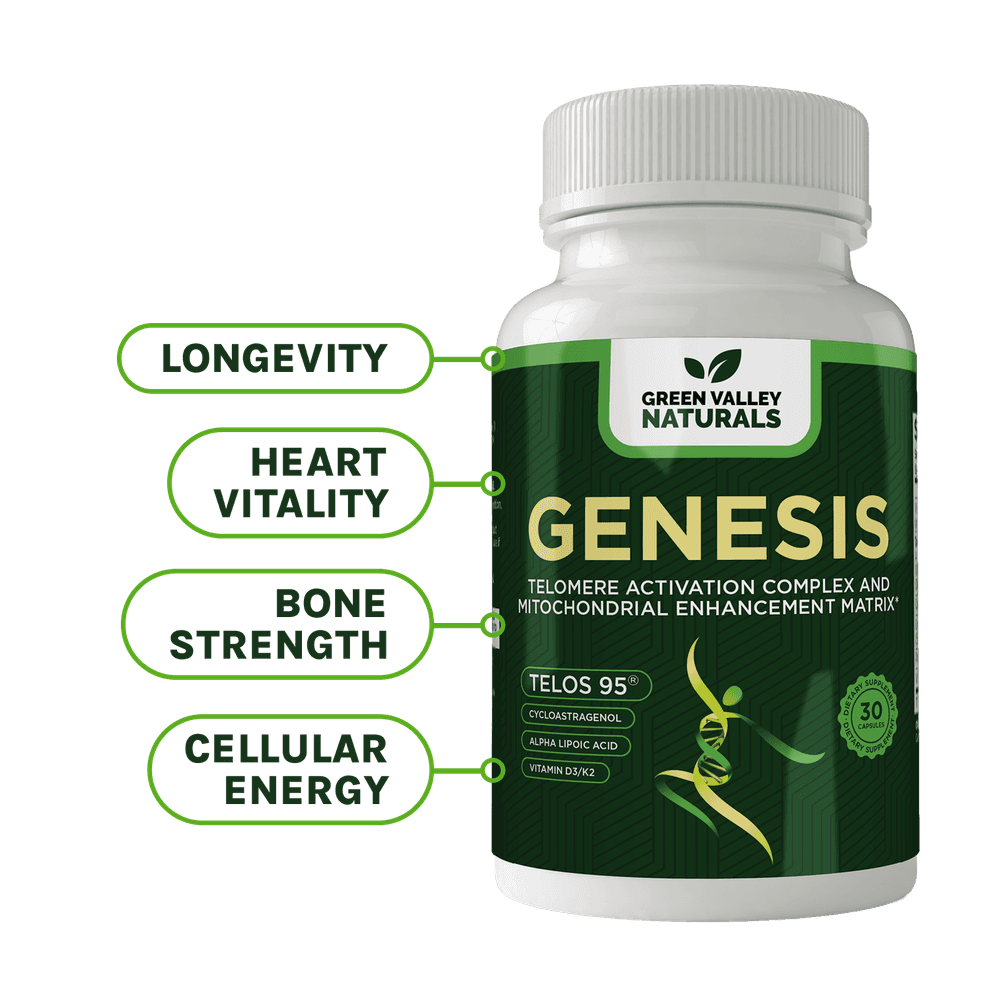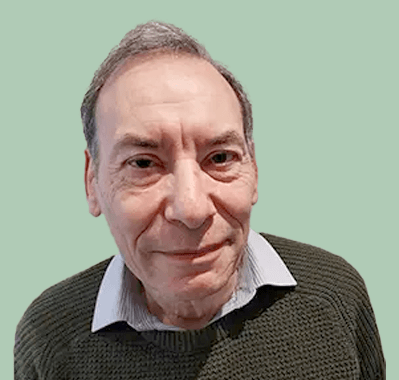
Have you ever wondered why some 50-year-olds look and feel like they're 35, while others seem decades older than their years? The answer lies in understanding the difference between your chronological age—the number of candles on your birthday cake—and your biological age, which reveals how well your body is actually functioning. Recent research shows that your biological age can be anywhere from 15 years younger to 15 years older than your chronological age, depending on your health status and lifestyle choices.
Key Takeaways
Biological vs. chronological: Epigenetic clocks and clinical/fitness markers reveal how your body is actually aging, not your chronological age.
Biological age is changeable: Diet, exercise, sleep, stress care, and sunlight can lower biological age—often measurably.
Regularly measure your biological age: Use results to personalize habits, then track improvements over time.
Introduction to Biological Age
Biological age refers to the measure of how old a person's body is, as opposed to their chronological age. While chronological age simply counts the years since birth, biological age reflects the true state of a person's body based on cellular damage, physiological changes, and loss of function that occur over time.
Understanding biological age is crucial for maintaining overall health and reducing the risk of chronic diseases. Recent studies published in 2024 found that aging can be accurately estimated using DNA methylation profiles, with predictive models estimating tissue age with high accuracy (r > 0.96). This breakthrough research demonstrates that biological aging is an evolutionarily conserved process that can be precisely measured and potentially modified.
Biological aging is a complex process influenced by lifestyle factors, genetic factors, and disease risk. However, unlike your chronological age, which increases steadily year by year, your biological age can be slowed, stopped, or even reversed through targeted interventions.
Understanding Age: The Key Differences
Chronological vs. Biological Age
Chronological age is straightforward—it's the number of years you've been alive. This number increases at the same rate for everyone: one year per year, regardless of health status, lifestyle, or genetics.
Biological age, on the other hand, is a more accurate measure of how well your body is functioning. It takes into account lifestyle factors, genetic predispositions, and the cumulative effects of environmental exposures on your cellular health. Research published in 2024 shows that adherence to more health-promoting factors was associated with slower biological aging, either assessed via phenotypic measures or clinical biomarkers.
Why Biological Age Matters More
Age-related diseases such as heart disease, diabetes, and cognitive decline can be prevented or delayed by maintaining a healthy lifestyle that supports a younger biological age. Studies have found that people with optimal cardiovascular health had biological ages six years younger than their actual age.
Lifestyle choices such as a balanced diet, regular exercise, quality sleep, and stress management play a significant role in determining your biological age. This means you have considerable control over how well you age, regardless of your genetic background.
Measuring Biological Age: The Science Behind the Numbers
DNA Methylation: The Gold Standard
The most advanced method for measuring biological age involves analyzing DNA methylation patterns—chemical modifications to your DNA that change predictably over time. As we get older, chemical tags called methyl groups latch onto our DNA. The pattern of these tags gives researchers an indicator of biological age.
Recent research has identified that aging-related changes occur at multiple neighboring CpGs, with implications for using fragment-level analysis of sequencing data in aging research. Advanced epigenetic clocks can now predict biological age using as few as 30 DNA methylation sites with remarkable accuracy.
Clinical Biomarkers and Physical Assessments
Biological age can also be measured using various clinical methods, including:
Blood pressure and cardiovascular markers
Metabolic indicators (blood sugar, cholesterol levels)
Inflammatory markers (C-reactive protein, cytokines)
Physical function tests (grip strength, gait speed, balance)
Cognitive assessments (memory, processing speed, executive function)
A 2024 study analyzing over half a million UK Biobank participants found that choosing healthy lifestyle patterns, especially an anti-inflammatory diet, at least moderate physical activity, and healthy sleep patterns, is crucial for delaying aging and reducing mortality risk.
The Surprising Fingernail Connection
One of the most fascinating discoveries in biological aging research comes from an unexpected source: your fingernails. David Sinclair, the renowned Harvard geneticist and anti-aging expert, revealed that "the rate of your nail growth is a really good indicator of how old you are biologically."
This insight is based on a groundbreaking 1979 study that included 271 human volunteers aged from ten to a hundred. The findings revealed remarkable patterns:
From age 25 to 100, nail growth decreases by 0.5% per year, with about a 50% decline over the lifespan
Nail growth comes in spurts—there are 7-year periods of slow decline that alternate with 7-year periods of more rapid decline
Temperature affects growth: At 60°F, nails grow at 0.08 mm per week, but at 90°F, growth more than doubles to 2.0 mm per week
Health conditions impact growth: Slower growth occurs with acute infection, decreased circulation, congestive heart failure, and hypothyroidism
Much of the variation in nail growth is linked to features of aging, with slower or faster declines related to temperature, circulation, hormone production, and metabolism. This makes nail growth rate a surprisingly accurate and accessible biomarker of biological aging.
Since then, science has revealed new surprising factors such as your height or your face temperature, as effective, unique, individual markers of biological age.
Biological Aging: What's Really Happening in Your Body
The Cellular Level
Biological aging occurs through several interconnected mechanisms:
Cellular senescence happens when cells can no longer divide and function properly. This occurs as protective DNA caps called telomeres shorten with each cell division. DNA methylation measurements were shown to be valuable age prediction tools, even surpassing in accuracy the age prediction models based on telomere length.
Oxidative stress results from an imbalance between harmful free radicals and your body's antioxidant defenses. This damage accumulates over time, affecting cellular function and contributing to age-related diseases.
Inflammation becomes chronic as we age, contributing to tissue damage and disease progression. Recent research shows that higher values in age-accelerators were associated with inflammation and immune activation.
Changes Beyond the Cellular Level
As biological aging progresses, you may notice changes in your fingernails that reflect underlying health status:
Color changes: Aging nails may become pale, dull, or take on yellow, brown, or gray hues. Pale or brittle nails may indicate iron-deficiency anemia.
Texture changes: Aging can produce roughness, splits, fragility, or brittleness. Vertical ridges are common, affecting up to 85% of older people, while horizontal grooves may indicate conditions affecting blood flow to the nail.
Shape changes: Nails can become more curved or abnormally flat. A spoon-shaped appearance could indicate iron-deficiency anemia.
The Role of DNA Methylation in Biological Age
DNA methylation plays a significant role in determining biological age by regulating gene expression patterns that change predictably over time. DNA methylation plays a significant role in regulating transcription and exhibits a systematic change with age. These changes can be used to predict an individual's age.
Understanding DNA methylation patterns helps explain why lifestyle interventions can be so effective at modifying biological age. Research shows the pattern of DNA methylation is malleable, linked to diet, exercise and other lifestyle habits, making it possible to potentially slow down the pace of aging through targeted interventions.
Improving Your Biological Age: Evidence-Based Strategies
The good news is that there are numerous choices you can make every single day to improve your biological age and live longer. They begin with diet and lifestyle.
Diet and Nutrition
Your diet profoundly impacts your biological age by impacting the length of your telomeres. A recent study led by researchers at the University of California – San Francisco revealed that a healthy diet low in added sugars is associated with a younger biological age, as measured by DNA methylation.
Key dietary strategies include:
Reduce added sugars: Each gram of added sugar consumed was associated with an increase in epigenetic age
Eat anti-inflammatory foods: Focus on fruits, vegetables, whole grains, and omega-3 rich fish
Include fermented foods: Support gut health with yogurt, kefir, sauerkraut, and kimchi
Emphasize antioxidants: Berries, leafy greens, and colorful vegetables provide protective compounds
Exercise and Physical Activity
Regular exercise is one of the most powerful tools for slowing biological aging. A 2023 CDC study revealed that just 90 minutes of strength training per week could lead to a nearly four-year reduction in biological age.
Effective exercise strategies:
Strength training: Aim for 2-3 sessions per week to combat age-related muscle loss
Cardiovascular exercise: Include both moderate and vigorous activities
Flexibility work: Yoga or tai chi improve mobility and reduce inflammation
Daily movement: Regular walking or gardening keeps you active between formal workouts
Sleep and Stress Management
Quality sleep and stress management are crucial for maintaining a younger biological age. Sleep quality affects biological aging, with poor sleep associated with accelerated aging markers.
Sleep optimization strategies:
Maintain consistent sleep schedules
Create a cool, dark sleeping environment
Limit screen time before bed
Aim for 7-9 hours of quality sleep nightly
Stress management techniques:
Practice meditation or mindfulness
Engage in regular physical activity
Maintain strong social connections
Consider professional counseling when needed
The Power of Combined Interventions
Research demonstrates that combining multiple healthy lifestyle factors produces the most significant benefits. A case series of six women who completed an 8-week methylation-supportive diet and lifestyle program showed a statistically significant difference in biological age before (55.83 years) and after (51.23 years) the intervention, with an average decrease of 4.60 years.
The Benefits of Improving Biological Age
Health Outcomes
Improving your biological age can help:
Reduce chronic disease risk: Lower rates of heart disease, diabetes, and cancer
Enhance cognitive function: Better memory, focus, and mental clarity
Improve physical performance: Greater strength, endurance, and mobility
Boost immune function: More effective defense against infections and diseases
Longevity and Quality of Life
Estimates of biological age can aid prediction of age-related health outcomes, including multiple chronic diseases, impaired cognitive function, functional limitations, and mortality in older adults. By focusing on improving your biological age, you're investing in both a longer and healthier life.
Real-World Impact
Recent research analyzing data from over 3,500 participants found that smoking, socioeconomic status, physical activity, and living conditions were the factors that had the most influence on mortality and biological aging. Since most of these factors are modifiable, there's tremendous opportunity to improve health outcomes through lifestyle changes.
What Your Biological Age Test Results Mean
Interpreting Your Results
When you receive biological age test results, you might find:
Biological age younger than chronological age: Your lifestyle and genetics are supporting healthy aging
Biological age equal to chronological age: You're aging at an average rate
Biological age older than chronological age: There's room for improvement through lifestyle changes
Taking Action
If you want to really arrive at an accurate estimate of life span, you should include clinical variables like blood pressure, glucose metabolism, lipid levels. Biological age tests are just one piece of the puzzle—comprehensive health assessment should include multiple markers.
Monitoring Progress
Since biological age can change relatively quickly with lifestyle interventions, regular testing can help you:
Track the effectiveness of your health strategies
Identify areas needing additional attention
Stay motivated in your health journey
Make data-driven decisions about your wellness plan
The Future of Biological Age Research
Emerging Technologies
Scientists continue developing more accurate and accessible methods for measuring biological age. Epigenetic clocks, derived from DNA methylation patterns, have established themselves as powerful aging biomarkers, capable of estimating biological age and assessing aging rates across diverse tissues with remarkable precision.
Personalized Medicine
The future of anti-aging medicine lies in personalized interventions based on individual biological age profiles. This approach will allow for targeted treatments that address specific aging pathways most relevant to each person.
Preventive Healthcare
Understanding biological age is shifting healthcare from treating disease to preventing it. By identifying accelerated aging before symptoms appear, healthcare providers can implement interventions to maintain health and prevent age-related diseases.
Taking Control of Your Biological Age
Your biological age is not predetermined by your genes—it's largely influenced by the choices you make every day. Since genetics only account for 15-25% of the aging process, your daily habits hold significant power over your long-term health.
Whether you're 25 or 75, it's never too early or too late to start improving your biological age. Small, consistent changes in diet, exercise, sleep, and stress management can produce significant improvements in how well you age.
Remember to pay attention to simple indicators like your fingernail growth rate, which David Sinclair notes as "a really good indicator of how old you are biologically." If you notice your nails growing more slowly, it might be time to evaluate your lifestyle and consider implementing some of the evidence-based strategies discussed in this article.
The question "what is my biological age?" is ultimately about understanding and optimizing your health span—the period of life spent in good health. By focusing on modifiable factors and working with healthcare providers who understand biological aging, you can take control of how you age and potentially add both years to your life and life to your years.
Summary
Biological age estimates how well your body is functioning compared to your chronological years. Modern epigenetic “clocks” that read DNA methylation patterns—alongside clinical markers and functional tests—can gauge this with striking accuracy. Research shows biological age is modifiable: nutrition (especially low added sugar, anti-inflammatory patterns, fermented foods, antioxidants), exercise (including strength and cardio), quality sleep, stress management, sunlight exposure, and combined programs can meaningfully lower epigenetic age. Fascinatingly, even nail growth rate tracks with aging biology. Interpreting your results (younger, equal, or older than your calendar age) helps you target personalized actions, monitor progress, and invest in healthspan—not just lifespan.
Frequently Asked Questions
What is biological age and how is it different from chronological age?
Chronological age counts years lived; biological age reflects cellular and functional wear. It can be younger or older than your birthday age—and you can influence it.
How do I measure my biological age?
The most advanced tools are DNA methylation tests (epigenetic clocks). You can also combine clinical labs (lipids, glucose, inflammation), fitness tests (grip strength, gait speed), and cognitive measures for a fuller picture.
How often should I re-test?
Every 3–6 months is common if you’re making lifestyle changes; annually works for routine tracking. Re-testing lets you see whether interventions are moving your age in the right direction.
Which lifestyle changes make the biggest difference?
Reducing added sugar; anti-inflammatory, antioxidant-rich eating; 2–3 weekly strength sessions plus cardio; consistent 7–9 hours of sleep; stress management; and regular daylight exposure.
Are quick “bioage hacks” reliable?
Short programs can shift markers, but durable change comes from consistent habits. Use test results to personalize your plan rather than chasing one-off fixes.
Lifespan with Dr. David Sinclair #6 The Science of Looking Younger, Longer 2022
Orentreich N, et al. The Effect of Aging on the Rate of Linear Nail Growth J Invest Dermatol. 1979 Jul;73(1):126-30
Shen X, et al. Nonlinear dynamics of multi-omics profiles during human aging Nat Aging. 2024 Nov;4(11):1619-1634
Abdullah L, et al. Common nail changes and disorders in older people Can Fam Physician. 2011 Feb;57(2):173-81
Mathur, A., Taurin, S., & Alshammary, S. (2024). New insights into methods to measure biological age: a literature review. Frontiers in Aging, 12, 1395649.
Kim, S., et al. (2025). Artificial Intelligence-Driven Biological Age Prediction Model Using Comprehensive Health Check-Up Data. Frontiers in Medicine, 12, 12007724.
Emmanuel, R., et al. (2025). A mathematical model that predicts human biological age from physiological traits across multiple organ systems.eLife, 14, e92092.
Wang, Y., et al. (2025). Methods for the assessment of biological age – A systematic review. Experimental Gerontology, 195, 111133.
Wah, P., et al. (2025). FaceAge, a deep learning system to estimate biological age from easily obtainable and low-cost face photographs.Cell Reports Medicine, 6(5), 100597.




